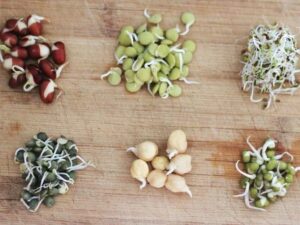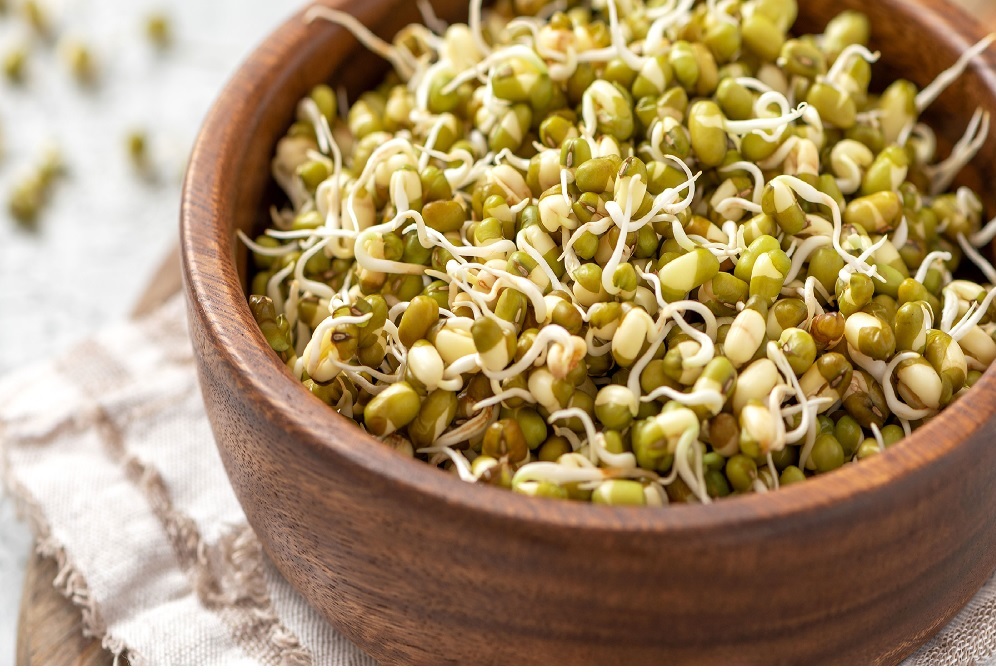Learn how to cultivate bean sprouts in your kitchen. You’ll save a tone of money, and it’s a terrific way to always have some freshly picked vegetables. They are simple to grow at home! (And an excellent hobby for those who live in apartments and wish to grow some of their own food.
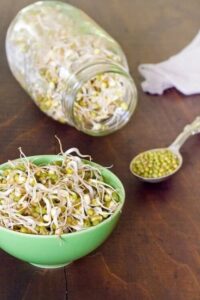
Here Some Techniques To Growing Bean Sprouts At Home Easily
Clean and inspect the beans.
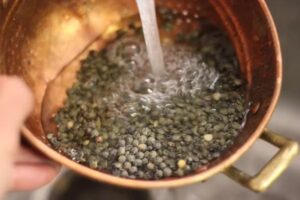
Lentils and mung beans sprout the most quickly and easily. For novices, alfalfa, chickpeas, and adzuki beans are all beneficial but take a little more time to prepare. Getting clean seeds is crucial since outbreaks of sickness linked to sprouts are frequently caused by contaminated seeds. Choose untreated, whole beans intended for eating or sprouting (divided red lentils, for example, won’t work). Your best bets are reputable health food stores and online directories (like sproutpeople.org and sproutman.com). You shouldn’t use the ones offered in gardening packets for sprouting because they probably have been chemically treated.
After washing them, take out any broken beans and foreign things.
Put the beans and water in the container.
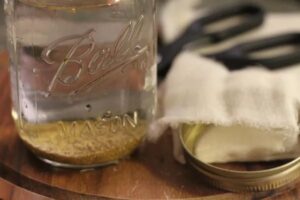
Add cool, clear water to the glass jar. Give the beans lots of room in the jar because they will grow as they soak and sprout, taking up even more space. For a 3-cup jar, two tablespoons of alfalfa seeds are plenty. More than 1/4 of the jar shouldn’t be occupied by other beans.
How to Prepare Banchan with Charred Brussels Sprouts
Learn how to cultivate bean sprouts in your kitchen. You’ll save a tonne of money, and it’s a terrific way to always have some freshly picked vegetables. They are simple to grow at home! (And a great project for those who live in apartments and wish to grow some of their own food.
Read also: Healthy Eating Routines to Help You Lose Weight

Put a drainable cap on top, then soak for 8 to 12 hours. It works well to secure cheesecloth with a rubber band or the outside ring of a canning lid, but you can also purchase specific sprouting jars that include a mesh lid. Soak the beans at room temperature for 8 to 12 hours. As a general rule, larger beans require soaking for longer periods of time.
Drain and rinse.
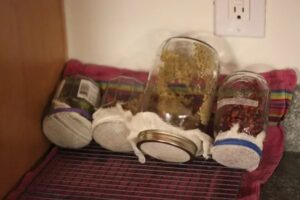
Through the mesh lid, drain the water out. Drain it once again after giving it a fresh water rinse. Locate a place that is shaded from the sun. Place it upside-down and angled on a wire cooling rack or dish rack so that the moisture may escape through the jar’s opening. Ensure that the area around the entrance has good airflow.
Repeat
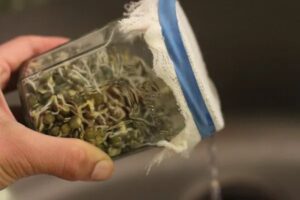
At least twice day, and up to four times daily if the beans appear to be fully drying out, rinse and drain the beans with new water. Continue doing this until the sprouts reach the desired length. In my experience, lentils and mung beans grow the quickest; after the initial soaking, they only need a day or two. The entire procedure can take two to five days. These lentils are almost finished.
Allow alfalfa sprouts to reach an inch or so in size. It depends on personal choice, but mung bean, lentil, chickpea, and adzuki sprouts are good at around a half-inch.
Alfalfa’s final step

The small leaflets will turn green if you leave a container of sprouted alfalfa in a sunny window for a couple of hours. Rinse thoroughly in a big bowl of cool, clean water. Delete the hulls that rise to the surface.
Wash and eat
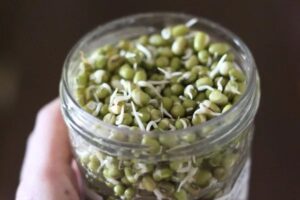
Before chilling, give your sprouts one last rinse and make sure they are well drained in a colander. Unsprouted beans should be separated. After putting them in a bag or container lined with paper towels, close it, and put it in the refrigerator.
Although most people consume these sprouts raw, other sprouted beans may resist cooking, with the exception of alfalfa sprouts (which would become mush if cooked). During the last two minutes of cooking, mung bean sprouts can be included in a dish. After steaming for 4-5 minutes, sprouted lentils are finished cooking. Adzuki beans and sprouted chickpeas should be cooked for about 15 minutes.
